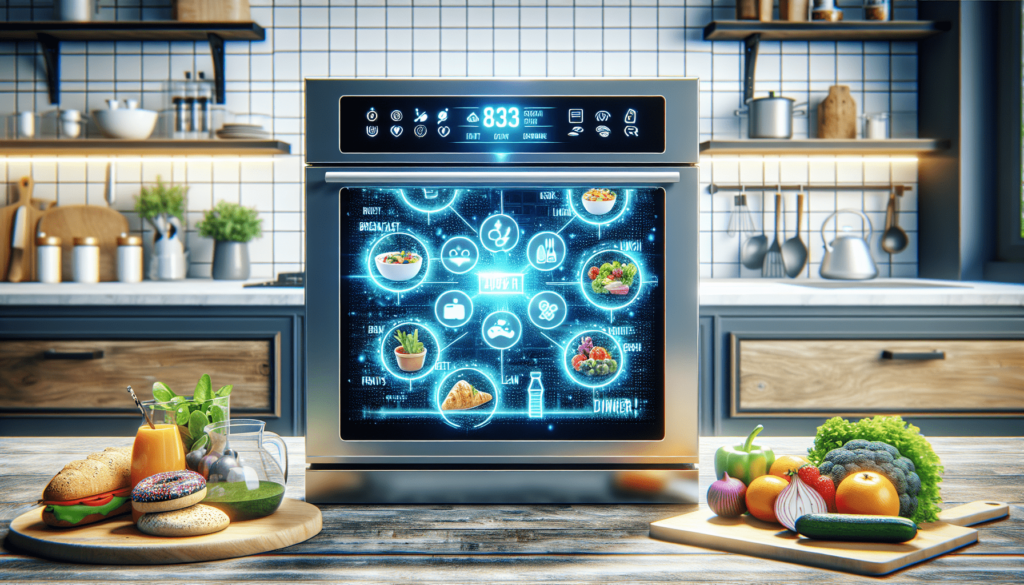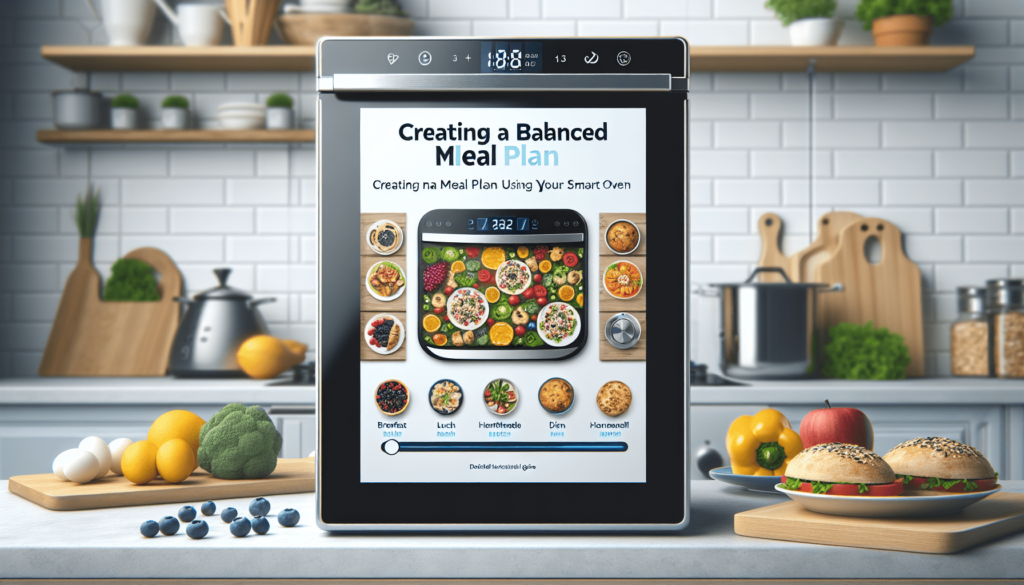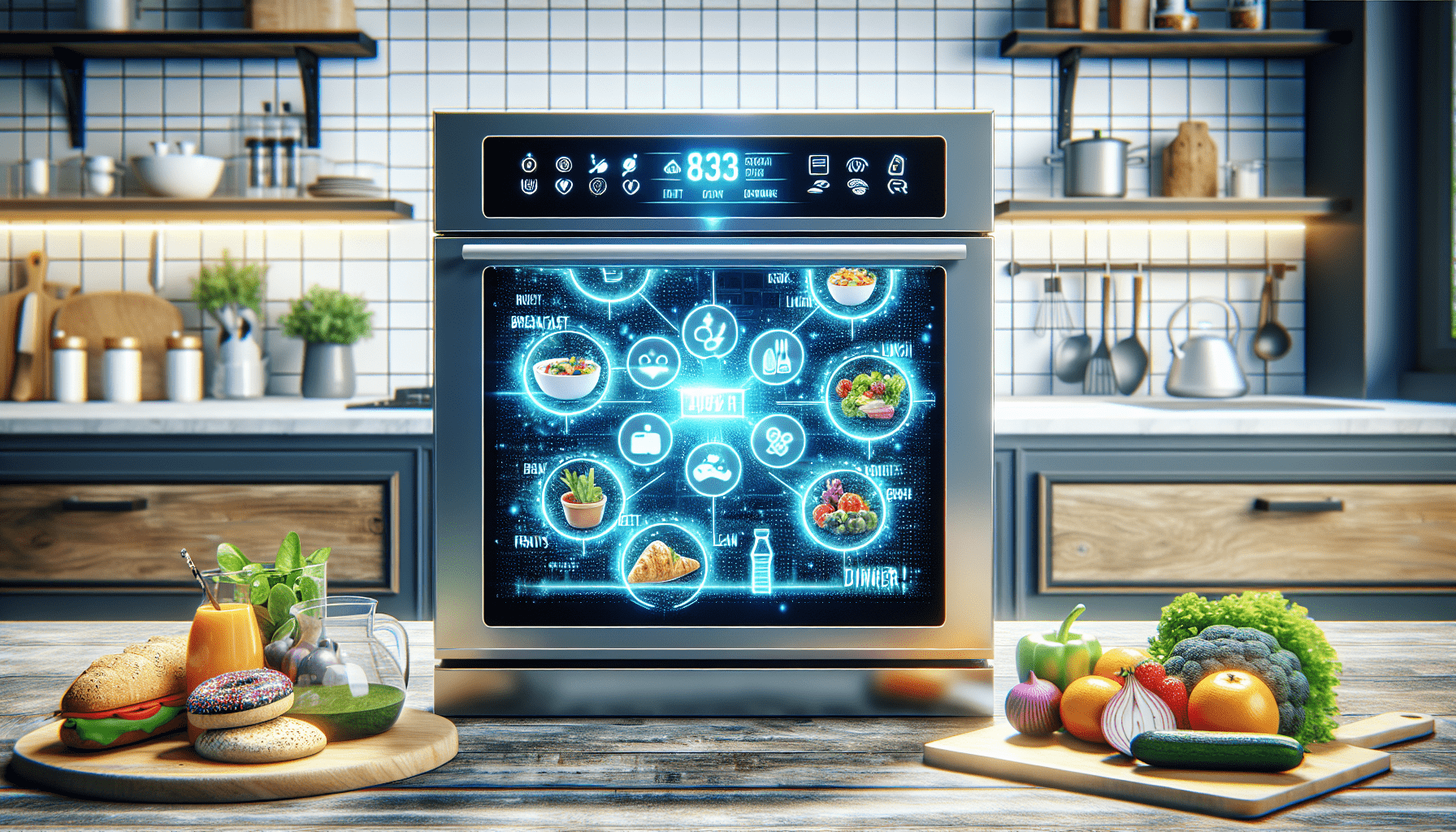So you’ve invested in a smart oven, but now you’re wondering how to make the most of it in terms of healthy and balanced meal planning. Look no further! This article will guide you through the process of creating a well-rounded meal plan that perfectly complements your smart oven’s capabilities. From incorporating a variety of food groups to utilizing different cooking methods, we’ll help you maximize both the convenience and health benefits of your smart oven. Get ready to discover the endless possibilities of creating nutritious and delicious meals right at your fingertips.

Understanding the Importance of a Balanced Meal Plan
Nutritional requirements
A balanced meal plan is essential for maintaining good health and wellbeing. It provides your body with the necessary nutrients it needs to function optimally. Nutritional requirements vary depending on factors such as age, sex, activity level, and overall health. It is important to understand these requirements in order to create a meal plan that meets your specific needs.
Health benefits of a balanced meal plan
Following a balanced meal plan offers numerous health benefits. It can help regulate blood sugar levels, prevent chronic diseases such as heart disease and diabetes, support weight management, improve digestion, and boost energy levels. A well-balanced diet that includes a variety of fruits, vegetables, lean proteins, whole grains, and healthy fats can provide your body with the necessary vitamins, minerals, and antioxidants it needs to thrive.
Role of a smart oven in meal planning
A smart oven can be a valuable tool in creating and maintaining a balanced meal plan. It offers various features and cooking modes that can make meal preparation easier and more efficient. From controlling temperature and cooking time to providing options for convection cooking, dehydration, and air frying, a smart oven allows you to cook a wide range of healthy meals with convenience and precision.
Utilizing the Features of Your Smart Oven
Temperature and cooking modes
One of the key features of a smart oven is the ability to control the temperature accurately. This is crucial for ensuring that your meals are cooked to perfection. Whether you need to bake, roast, or broil, being able to set and monitor the temperature can help you achieve the desired results every time. Additionally, different cooking modes such as steam, grill, and bake settings allow you to explore various cooking techniques and adapt them to your meal plan.
Convection cooking
Convection cooking is another feature offered by many smart ovens. It involves using a fan to circulate hot air evenly throughout the oven, resulting in faster and more even cooking. Convection cooking is particularly useful for roasting vegetables, baking pastries, and achieving crispy textures. By utilizing this feature, you can create healthy and delicious meals with less cooking time and energy consumption.
Dehydration and air frying options
Some smart ovens also come with dehydration and air frying options. Dehydration is a great way to preserve the nutrients in fruits, vegetables, and herbs by removing their moisture content. You can create dried fruits, vegetables chips, or even make your own homemade beef jerky. On the other hand, air frying allows you to enjoy crispy and tasty dishes with significantly less oil. It is a healthier alternative to deep-frying that still achieves a satisfying texture and flavor.
Identifying Your Dietary Needs
Determining calorie intake
Before creating a meal plan, it is important to determine your daily calorie intake. This can be influenced by factors such as your age, gender, weight, and activity level. There are online calculators and formulas that can help you estimate your calorie needs. By knowing your calorie intake, you can ensure that your meal plan provides you with enough energy to sustain your daily activities while maintaining a healthy weight.
Macronutrient distribution
Macronutrients, including carbohydrates, proteins, and fats, are essential for proper nutrition. Determining the distribution of these macronutrients in your meal plan is vital. Most health professionals recommend a balanced distribution of around 45-65% of calories from carbohydrates, 10-35% from proteins, and 20-35% from fats. However, individual needs may vary, so it is important to consult with a healthcare professional or registered dietitian for personalized guidance.
Food intolerances or allergies
If you have any food intolerances or allergies, it is crucial to take them into consideration when creating your meal plan. Avoiding foods that cause adverse reactions is essential for maintaining your health and wellbeing. Fortunately, a smart oven can accommodate various dietary needs by allowing you to cook a wide range of foods and recipes. With careful planning and ingredient substitutions, you can create delicious meals that suit your dietary restrictions.
Developing a Weekly Meal Plan
Defining your goals
When creating a weekly meal plan, it is important to define your goals. Whether your aim is to lose weight, gain muscle, or simply improve your overall health, having a clear objective will help you stay focused and motivated. Consider factors such as your calorie intake, macronutrient distribution, and dietary restrictions when setting your goals. Breaking down your goals into smaller, manageable steps can also make them more attainable.
Creating a meal schedule
Once you have defined your goals, it is time to create a meal schedule. This involves planning out your meals and snacks for the week. Consider your daily routine, work schedule, and family commitments when determining meal times. Aim for three balanced meals each day, with healthy snacks in between if needed. Having a schedule in place can help you stay on track and prevent impulsive unhealthy food choices.
Planning for variety
Variety is the spice of life, and it is also important when it comes to meal planning. Incorporating a wide range of different foods and recipes not only ensures that you get a diverse range of nutrients, but it also prevents boredom and monotony. Try to include different types of fruits, vegetables, grains, proteins, and healthy fats in your weekly meal plan. Experiment with new recipes and flavors to keep your taste buds excited and engaged.

Selecting Nutrient-Rich Ingredients
Importance of whole foods
Whole foods are a cornerstone of a balanced meal plan. These include fresh fruits and vegetables, whole grains, lean proteins, and healthy fats. Whole foods are nutrient-dense, meaning they contain a wide range of vitamins, minerals, and other beneficial compounds. They can provide the necessary fuel for your body and support overall health. Whenever possible, choose whole foods over processed and refined options.
Incorporating fruits and vegetables
Fruits and vegetables are packed with essential vitamins, minerals, antioxidants, and fiber. They should be a significant part of your meal plan. Aim to incorporate a variety of colors and types of fruits and vegetables in your meals. They can be enjoyed raw, steamed, roasted, or sautéed. Consider substituting meat with plant-based proteins such as legumes or tofu to further increase your vegetable intake.
Choosing lean proteins
Proteins are essential for building and repairing tissues, as well as regulating various bodily functions. When selecting proteins for your meal plan, opt for lean sources such as skinless poultry, fish, beans, lentils, tofu, and low-fat dairy products. These options are lower in saturated fats and cholesterol, making them healthier choices. Vary your protein sources throughout the week to ensure you get a wide range of essential amino acids.
Optimizing Cooking Techniques for Healthy Meals
Steaming for nutrient preservation
Steaming is a cooking technique that involves using steam to cook food. It is considered one of the healthiest cooking methods as it helps preserve the nutrients in foods. Steaming vegetables, fish, and other delicate ingredients can help retain their vitamins, minerals, and natural flavors. You can easily steam food in your smart oven by using the steam setting or by using a steamer basket in a regular oven.
Grilling without excessive fats
Grilling is a popular cooking method that adds a smoky flavor to your dishes. While traditional grilling often involves high heat and the risk of charring or adding excessive fats, a smart oven can offer a healthier grilling option. Use the grill setting on your smart oven to cook lean meats, vegetables, or even fruit kebabs. By using the proper temperature and avoiding fat-laden marinades, you can enjoy grilled food without compromising your health.
Baking with healthier alternatives
Baking can be a healthier cooking method compared to frying or sautéing, especially when using whole grains and healthier alternatives. Instead of refined flour, opt for whole wheat flour or almond flour for added fiber and nutrients. Sweeten your baked goods with natural sweeteners like honey or maple syrup instead of refined sugars. You can also experiment with healthier fats such as coconut oil or applesauce in place of butter or oil.
Meal Prepping and Batch Cooking
Advantages of meal prepping
Meal prepping involves preparing your meals in advance, often in large batches, and portioning them out for the week. This method has several advantages. It saves time by reducing the need for daily meal preparation, ensures that you have nutritious meals readily available, and reduces the likelihood of making unhealthy food choices on a whim. Meal prepping can also help with portion control and prevent food waste.
Organizing ingredients for efficiency
When meal prepping, it is important to organize your ingredients and cooking process for efficiency. Start by creating a detailed grocery list and ensure you have all the necessary ingredients on hand. Use your smart oven to cook multiple dishes simultaneously, taking advantage of its various cooking modes. Invest in quality food storage containers to portion and store your meals properly. Label and date your meals to ensure freshness.
Storing and reheating with your smart oven
A smart oven can also assist with storing and reheating your pre-prepared meals. When storing your meals, opt for airtight containers or freezer-safe bags to maintain freshness. Consider portioning out your meals into individual servings to make reheating even more convenient. When reheating, use your smart oven’s settings to ensure the food heats evenly and thoroughly without drying out or losing flavor.
Creating Balanced Meal Combinations
Building balanced plates
Creating balanced meal combinations involves ensuring that each plate contains adequate servings of proteins, carbohydrates, and vegetables. Aim to fill half your plate with non-starchy vegetables such as spinach, broccoli, or peppers. The remaining half should be divided between lean proteins and whole grains. This balance of nutrients will provide you with a well-rounded and satisfying meal.
Pairing proteins with whole grains and vegetables
Proteins, whole grains, and vegetables complement each other in a balanced meal. Pairing proteins like baked chicken or grilled fish with quinoa and roasted vegetables creates a well-balanced and nutritious dish. Legumes such as beans and lentils can serve as both a protein and a carbohydrate source. Experiment with different combinations to find what works best for your taste and dietary preferences.
Incorporating healthy fats
Healthy fats are an important part of a balanced meal plan. They provide essential fatty acids and help your body absorb fat-soluble vitamins. Incorporating sources of healthy fats such as avocados, nuts, seeds, and olive oil into your meals can enhance flavor and increase satiety. However, it is important to consume fats in moderation as they are high in calories.
Monitoring Portion Sizes
Understanding appropriate portions
Monitoring portion sizes is crucial for maintaining a balanced meal plan. It is important to understand appropriate portion sizes to prevent overeating and ensure you are getting the right amount of nutrients. Use tools such as measuring cups, food scales, and visual references to help gauge portion sizes. Remember that portion sizes may vary depending on your individual needs and goals.
Using measuring tools
Measuring tools can help you accurately portion your meals and track your intake. Use measuring cups for liquids and dry ingredients, and use a food scale for more precise measurements. Measuring tools can also help you control portion sizes when meal prepping and ensure consistency in your meals. By practicing portion control, you can maintain a balanced meal plan and prevent unnecessary calorie consumption.
Avoiding overeating
Overeating can sabotage your efforts to maintain a balanced meal plan. Practice mindful eating by paying attention to your body’s hunger and fullness cues. Eat slowly, savor each bite, and stop eating when you feel satisfied, not overly full. Avoid distractions such as electronic devices or television while eating, as they can lead to mindless overeating. Keeping track of your food intake and emotions can also help identify any triggers for overeating.
Tracking and Adjusting Your Meal Plan
Monitoring progress and health markers
Tracking your progress and monitoring your health markers are essential when following a meal plan. Regularly weigh yourself, take body measurements, and track your energy levels, mood, and overall well-being. Additionally, keep an eye on indicators such as blood pressure, cholesterol levels, and blood sugar levels. By monitoring these markers, you can assess the effectiveness of your meal plan and make adjustments as needed.
Making modifications based on results
Based on your progress and health markers, you may need to make modifications to your meal plan. If you are not seeing the desired results or if you experience any adverse effects, consult with a healthcare professional or registered dietitian. They can provide personalized guidance and help you fine-tune your meal plan to better suit your needs and goals.
Seeking professional guidance if needed
Creating and maintaining a balanced meal plan can be challenging, especially if you have specific dietary needs or health concerns. If you feel overwhelmed or unsure, it is always a good idea to seek professional guidance. Registered dietitians and nutritionists are trained to provide expert advice and personalized recommendations based on your unique circumstances. They can help you develop a meal plan that promotes your overall health and supports your individual goals.
In conclusion, understanding the importance of a balanced meal plan is crucial for maintaining good health and wellbeing. By utilizing the features of your smart oven, identifying your dietary needs, developing a weekly meal plan, selecting nutrient-rich ingredients, optimizing cooking techniques, and monitoring portion sizes, you can create balanced and nutritious meals. Tracking and adjusting your meal plan, as well as seeking professional guidance if needed, will help you achieve your goals and maintain a healthy lifestyle. With proper planning and the help of your smart oven, you can enjoy delicious and healthy meals every day.
